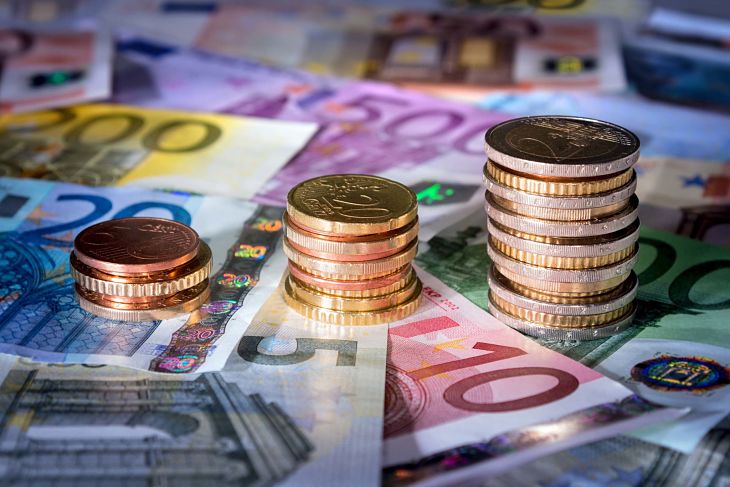Investors may be looking to the Eurozone as economic activity is accelerating.
However, an appreciating U.S. dollar or depreciating euro currency, will weigh on foreign returns. Consequently, potential investors should consider a suitable currency-hedged exchange traded fund to gain exposure to a growing Eurozone.
According to IHS Markit Ltd., Europe’s Purchasing Managers’ Index for manufacturing and services increased to 53.7 from October from 52.6, its quickest rise since the start of the year – readings above 50 indicate an expanding economy. The Eurozone economy is expected to expand 1.5% over the next two years.
The European Central Bank will also remain supportive of the economy. There were talks that the central bank could begin tapering its quantitative easing program, but ECB President Mario Draghi quashed rumors and could even extend bond purchasing to further stimulate depressed inflation levels – Eurozone inflation was 0.4% in September, or well below the ECB’s 2% target.
The ECB has already spent over a trillion euros buying government bonds, cut its benchmark rate to zero and adopted a negative deposit rate, which have all contributed to a weakened euro currency.
Meanwhile, market observers are increasing bets that the U.S. Federal Reserve could hike interest rates in December, further strengthening the U.S. dollar against the euro currency.
Given the accommodative monetary policy and expanding economy, investors may be looking to Eurozone equities. However, a depreciating euro currency would diminish Eurozone stock returns when converted back into a stronger U.S. dollar. Consequently, investors can turn to currency-hedged ETF options to gain a purer play on the underlying Eurozone market.
However, not all ETFs are created the same, so investors should take the time to consider the strengths and weakness of the various fund options.
